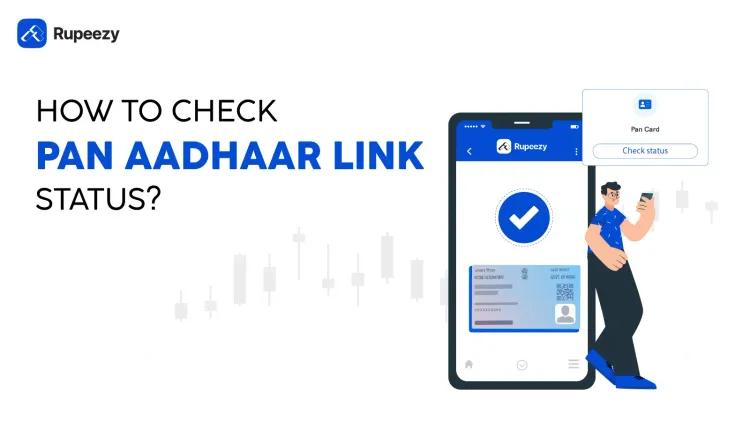List of Public Sector Banks in India 2025


00:00 / 00:00
The banking sector is the backbone of a country's economy. In India, the banking sector includes public and private banks. The main functions performed by these banks include deposit mobilization, credit supply, and implementation of monetary policies.
These banks play a significant role in developing infrastructure, small businesses, development of agriculture, and industrial financing. These are help in the implementation of the fiscal policies.
While there are many banks in India, the public sector banks are the oldest. These banks play a primary role in improving the country's financial health. So, let us start by understanding what public sector banks are. Moving ahead, let us explore the top public sector banks in India.
What are Public Sector Banks?
Public Sector or PSU banks refer to the banking institutions owned and operated by the government. In the public sector banks in India, the government holds more than 51% of the stake.
The stake can be either controlled by the Ministry of Finance or the State Ministry of Finance. These banks are listed on the stock exchanges as well. The main aim of these banks is to perform social welfare and ensure every individual has access to banking services.
These are also known as government banks. The first PSU bank was the Imperial Bank of India, nationalized in 1955. Later, this bank was renamed the State Bank of India (SBI), and this had 60% of its holding from the Reserve Bank of India (RBI).
By 1969, around 14 more commercial banks were converted to public banks in India. This action aimed to provide access of banks to underprivileged people and help people with agricultural credits.
With time, the number of public sector banks in India kept fluctuating. Currently, only 12 PSU banks in India are active and operational. In the next section, let us explore the complete PSU bank list and learn more about these in detail.
List of Public Sector Banks in India 2025
The list of public sector banks in India is quite long. There are 12 PSU banks, all of which are known for their market capitalization and services. Below is the list of all the banks with their market capitalization:
Name of the Bank | Market Capitalization (in ? Cr.) as of 30 Dec 2024 |
Bank of Baroda | 1,26,558.75 |
Bank of India | 46,869.72 |
Bank of Maharashtra | 40,519.11 |
Canara Bank | 91,205.40 |
Central Bank of India | 46,052.38 |
Indian Bank | 73,813.63 |
Indian Overseas Bank | 96,893.77 |
Punjab National Bank | 1,16,883.23 |
Punjab & Sind Bank | 32,296.15 |
State Bank of India | 7,14,728.20 |
Union Bank of India | 89,969.68 |
UCO Bank | 51,350.84 |
Overview of Top Public Sector Banks in India
Now let us explore the details of the top PSU banks in India here:
1. Bank of Baroda (BoB)
This bank was established in 1908 and was nationalized in 1969. In the list of PSU banks in India, this is one of the largest. This bank is known domestically and internationally and has a presence in over 17 countries. In 2023, BoB received the 'First Prize' in the Nationalized Bank category for excellent Rajbhasha implementation under the 'Rajbhasha Kirti Award' scheme.
Head Office: Baroda, Gujarat
Founder: Maharaja Sayajirao Gaekwad III
Total Branches: 8352
Total ATMs: 11000+
Services Offered: Retail banking, loans, forex cards, investment banking, and implementation of government schemes.
Recent Developments: The bank recently merged with Dena and Vijaya Bank, leading to better reach. It is also focused on better technology and better CSR activities.
2. Bank of India (BOI)
Started in 1906 by a group of Mumbai-based businessmen, this public sector bank was nationalized in 1969. Since then, it has witnessed rapid growth and has expanded to every city in the country. The bank is also present in 15 foreign countries, offering customers retail and business banking services.
Head Office: Mumbai, Maharashtra
Founder: Group of influential businessmen
Total Branches: 5170
Total ATMs: 8230+
Services Offered: Focused on promoting government financial schemes with all the banking services in general.
Recent Developments: Promoting financial inclusion for all by developing better reach and focusing on digital banking services.
3. Bank of Maharashtra (BoM)
BoM is one of the oldest and was established in 1835. Initially, started as a commercial bank, which was known as the Bank of Bombay. It is the bank with the largest network in Maharashtra. For the purpose of better financial development, this bank has adopted over 75 villages. A leading bank with growth potential, this bank is deeply involved in CSR activities.
Head Office: Pune, Maharashtra
Founder: V.G. Kale and D. K. Sathe
Total Branches: 2551
Total ATMs: 2000+
Services Offered: Entire retail and commercial banking services, from opening an account to providing loans.
Recent Developments: The bank aims to educate people on digital banking and has launched services like Mahamobile and Maha-e-trade.
4. Canara Bank (CNB)
Founded by a philanthropist and a great visionary in 1906, this bank is now one of the biggest PSU banks in India, with 13 subsidiaries linked to it. Started in Mangalore, Karnataka, the bank is the first to have an inter-city network of ATMs. Known for its services and facilities, this is one of the fastest-growing banks that promotes financial education and inclusion widely.
Head Office: Bangalore, Karnataka
Founder: Shri Ammembal Subba Rao Pai
Total Branches: 9658
Total ATMs: 9881
Services Offered: Retail banking, loans, forex cards, investment banking, and implementation of government schemes.
Recent Developments: The bank is increasing its focus on the upliftment of the villages and offering financial solutions with better support to develop businesses.
5. Central Bank of India (CBI)
The PSU bank list is incomplete without the mention of this bank. CBI was started in 1911 and was initially promoted as the first-even Swadeshi Bank of India. Aimed at offering customer-centric services, the bank ensures that there is transparency. It has recently increased its use of technology to offer seamless transactions from anywhere and anytime.
Head Office: Mumbai, Maharashtra
Founder: Sir Sorabji Pochkhanawala
Total Branches: 4541
Total ATMs: 4085
Services Offered: Opening accounts, providing loans, issuing cards, and accepting deposits.
Recent Developments: The bank started a women's entrepreneur cell to help women start their own businesses. Additionally, it initiated video KYC and door-to-door banking services for ease.
6. Indian Bank (INB)
In the list of PSU bank mergers, this is the one that has experienced quite a lot. Starting in 1907, the bank had an emblem with a Banyan tree in it, which denoted progress, growth, and prosperity. Over the years, it has merged with the Bank of Thanjavur and Allahabad Bank. This bank also issues Central Bank Digital Currency or the CBDC, which is a legal tender.
Head Office: Chennai, Tamil Nadu
Founder: S. Rm. M. Ramaswami Chettiar
Total Branches: 5856
Total ATMs: 5200+
Services Offered: Inclusion of government schemes, retail banking, business banking, and international trade.
Recent Developments: The bank has reached the top in the implementation of government schemes. It also has improved its reach by establishing various touchpoints and digital banking services.
7. Indian Overseas Bank (IOB)
Founded in 1937, this bank is currently one with 3269 domestic branches and 2 digital banking units, with around 4 branches and representative units. Its main objective is to assist customers with FOREX and overseas banking. Recently, its digital initiatives to increase transactions have helped it win the Degidhan Award 2020–21.
Head Office: Chennai, Tamil Nadu
Founder: Shri. M.Ct.M. Chidambaram Chettyar
Total Branches: 3322
Total ATMs: 3503
Services Offered: All the basic banking services and the added government-backed financial schemes.
Recent Developments: The bank has increased its foothold in foreign exchange business, making it a pioneer in the field. It has also launched omnichannel customer services to offer better and quicker resolutions.
8. Punjab National Bank (PNB)
One of the top PSU banks in India, this was started in 1895. It was the result of the combined efforts of various visionaries, including Lala Lajpat Rai, Babu Kali Prasono Roy, Mr. E C Jessawala, Sardar Dyal Singh Majithia, and Lala Harkishan Lal. It recently merged with the Oriental Bank of Commerce (OBC) and the United Bank of India (UBI). This expanded its reach.
Head Office: New Delhi, India
Founder: Dyal Singh Majithia
Total Branches: 10159
Total ATMs: 12040
Services Offered: Retail banking, loans, forex cards, investment banking, and implementation of government schemes.
Recent Developments: The bank is focusing on increasing its loan base and digital services. It stands as a pioneer in offering domestic and international banking services to its customers.
9. Punjab & Sind Bank (PSB)
With over 635 branches located in Punjab only, PSB is one of the top banks in India. This bank was started in Amritsar, Punjab, in 1908. It is one of the first 6 nationalized banks in India. The bank is based on the social commitment to uplift the status of the weaker sections of society by offering them financial support and education.
Head Office: New Delhi, India
Founder: Bhai Vir Singh, Sardar Tarlochan Singh, Sir Sunder Singh Majitha
Total Branches: 1584
Total ATMs: 1041
Services Offered: Retail banking, investment banking, loans, pension schemes, deposits, and other government schemes.
Recent Developments: This bank is targeting to set up more branches by 2024-25. It is developing innovative products for the customer using cutting-edge technology. One such tool is Jeevan Praman ( Life Certificate ), which uses face authentication.
10. State Bank of India (SBI)
A bank that needs no introduction, this is one of the largest public sector banks in India. It was started in 1806 and was named as the Bank of Calcutta. After 3 years in 1809, this was redesigned as the Bank of Bengal. It initially had various subsidiary banks, but all of them merged over time.
The major mergers included State Bank of Saurashtra, State Bank of Bikaner & Jaipur (SBBJ), State Bank of Travancore (SBT), State Bank of Mysore (SBM), State Bank of Patiala (SBP), State Bank of Hyderabad (SBH), Bharatiya Mahila Bank, and Kashinath Seth Bank.
Head Office: Mumbai, Maharashtra
Founder: John Matthai
Total Branches: 22640
Total ATMs: 63500+
Services Offered: Retail banking, loans, investment banking, deposits, insurance, KYC corrections, and implementation of government schemes.
Recent Developments: The bank is a part of the Fortune 500 Company list. It has won various awards, including the Best Place to Work Award multiple times. It has recently introduced a Positive Pay System (PPS) for speedier check payments of all types.
11. Union Bank of India (UBI)
Established in 1919, this bank was inaugurated by the Father of the Nation, Mahatma Gandhi, in 1921. The Union Bank offers classic services, including Talking ATM for the visually impaired and mobile applications. Its reach has increased incredibly owing to its merger with Andhra Bank and Corporation Bank.
Head Office: Mumbai, Maharashtra
Founder: Seth Sitaram Poddar
Total Branches: 8555
Total ATMs: 9124
Services Offered: Basic banking services for individuals and businesses with government inclusion scheme implementation.
Recent Developments: The bank is the first to secure 100% digitalization in all its branches. It launched Rewa Siddhi Gramin Bank to be the first regional rural bank with 100% CBS connectivity. It has also established a subsidiary in London to expand its global presence.
12. UCO Bank (UCO)
This public sector bank was founded in 1943. When it was started, it was called the United Commercial Bank. This domestic bank has correspondents globally with 2 Major International Financial Centres in Hong Kong and Singapore. It has a profitable presence in the overseas market due to its diversified customer base.
Head Office: Kolkata, West Bengal
Founder: G. D. Birla
Total Branches: 3230
Total ATMs: 2500+
Services Offered: Savings and current accounts, deposits, loans, credit cards, digital banking, and inclusion services.
Recent Developments: The bank has started to take the foreign exchange business in over 50 centers in India. It also aims to improve financial literacy among people and increase the reach of government schemes.
Top 10 Public Sector Banks in India Based on Government Holding
The PSU banks are ones in which the government holds more than 50% stake. These banks offer all the basic services to their customers and also support various government initiatives for social welfare.
The government’s significant ownership offers some unique benefits:
Expanding operations to rural areas
Support to the agriculture sector
Development of small businesses
Credit to the underprivileged
The top 10 public sector banks in India as per government holding are as follows:
Rank | Bank | Government Shareholding (%) |
1 | Punjab and Sind Bank | 97.07% |
2 | Indian Overseas Bank | 96.38% |
3 | Central Bank of India | 93.08% |
4 | Bank of Maharashtra | 90.97% |
5 | Union Bank of India | 83.49% |
6 | Bank of India | 81.41% |
7 | Indian Bank | 79.86% |
8 | Punjab National Bank | 73.15% |
9 | Bank of Baroda | 63.97% |
10 | Canara Bank | 62.93% |
Features of Best Public Sector Banks in India
The top PSU banks in India are known because of the following reasons:
They offer complete retail banking services, including opening accounts, accepting deposits, and providing loans.
These banks help launch and regulate government financial schemes.
You can get services linked to international banking. These are crucial for the growth of business.
Businesses can acquire loans and get support to expand their presence globally through the public sector banks in India.
The PSU banks in India follow the rules of RBI and other financial regulatory bodies, making them perfectly safe.
These banks are known to spread financial education in the rural areas.
Conclusion
The best banks in India offer you all the services without much hassle. In this list, the PSU banks stand at the top. Owing to their government support and aim to increase inclusion, these banks have created a unique position for themselves in the market.
These institutions facilitate the mobilization of savings and extend credit to crucial sectors. These banks help to implement government policies for social and economic development. Their reach in rural areas helps with financial education and inclusion.
With these, you have all the details linked to the top public sector banks in India. And if you are looking to start with your investment, explore Rupeezy. Plan your financial journey better by exploring the services offered today!
FAQs
Q. What is a PSU Bank?
A PSU Bank stands for the Public Sector Bank. These are the ones with a financial institution owned and operated by the government. It is one where the government holds more than 50% of the stake.
Q. How Many Public Sector Banks in India?
Many PSU banks in India have merged recently. After this, 12 banks are working in the PSU sector.
Q. Which Public Sector Bank Is the Largest in India?
SBI is India's largest public sector bank. This bank has a great network. The bank also has the highest number of customers and a considerable market capitalization.
Q. What Makes Public Sector Banks Different?
Public sector banks are primarily government-owned and offer all the basic banking services. In addition, these banks focus on social welfare, financial inclusion, and serving the underbanked areas.
Check Out These Related Articles |
The content on this blog is for educational purposes only and should not be considered investment advice. While we strive for accuracy, some information may contain errors or delays in updates.
Mentions of stocks or investment products are solely for informational purposes and do not constitute recommendations. Investors should conduct their own research before making any decisions.
Investing in financial markets are subject to market risks, and past performance does not guarantee future results. It is advisable to consult a qualified financial professional, review official documents, and verify information independently before making investment decisions.

All Category










